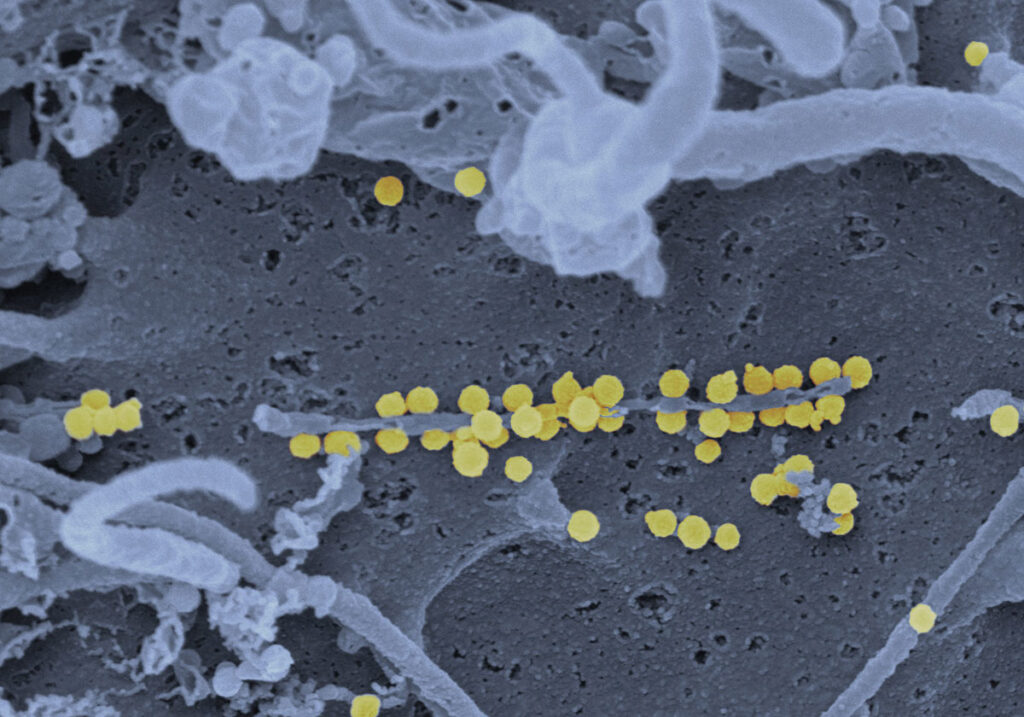Crimean-Congo hemorrhagic fever virus (CCHFV) is one of the most lethal tick-borne pathogens known, with a widespread presence across Africa, Europe, Asia, and the Middle East, and a case fatality rate approaching 40%. Despite decades of research, no approved vaccines or highly effective therapeutics currently exist for CCHF, leaving supportive care as the primary option for patients. A recent study led by Yutong Sui and colleagues from Jilin University, published in PLOS Pathogens, has uncovered a promising new antiviral target that may shift the landscape of CCHF treatment.
Viral Hijacking of Host Machinery to Promote Replication
One of the key findings of the study centers on a special structure within the virus’s genetic material. The researchers discovered a short sequence of RNA—part of the virus’s genetic code—that is rich in the building block guanine. This sequence can fold into a unique shape called a G-quadruplex, or G4 structure. G4 structures are naturally occurring formations found in both human and viral genes, and they play important roles in controlling how genes are turned into proteins.
In the case of Crimean-Congo hemorrhagic fever virus (CCHFV), this G4 structure—named M-PQS-1664(+)—acts as a kind of built-in brake, slowing down the production of viral proteins that the virus needs to reproduce. In other words, this structure helps keep the virus in check by making it harder for it to copy itself.
But the virus has evolved a clever workaround. It takes advantage of a human protein called DDX60, which normally plays a role in defending against viral infections. The virus hijacks DDX60 and uses it to unwind or unfold the G4 structure, disabling the brake and allowing the virus to freely make more copies of itself. This hijacking allows the virus to replicate much more efficiently, and it reveals a vulnerable step in the viral life cycle—one that scientists could potentially target with drugs.
Cepharanthine: A Repurposed Drug with Potent Antiviral Activity
The team discovered that Cepharanthine (CEP), a bisbenzylisoquinoline alkaloid already approved for human use, can stabilize the CCHFV G4 structure and block DDX60 from unwinding it. This action significantly inhibits viral replication both in vitro and in animal models. Remarkably, Cepharanthine demonstrated approximately 88 times the antiviral potency of ribavirin, a broad-spectrum antiviral previously considered a treatment option for CCHF.
Cepharanthine’s established clinical use and favorable safety profile make it an attractive candidate for expedited repurposing in CCHF treatment trials. The researchers suggest that combination therapy with CEP and ribavirin could further enhance treatment efficacy while reducing the risk of antiviral resistance.
The Biosafety Measures Behind This Research
All work with CCHFV was conducted under high containment conditions in China, where the virus is classified as a Biosafety Level 3 (BSL-3) agent. In vitro studies were performed in BSL-3 laboratories, while animal studies took place in Animal Biosafety Level 3 (ABSL-3) facilities. Both the recombinant CCHFV experiments and animal protocols were approved by the Institutional Animal Care and Use Committee of the Academy of Military Medical Sciences (approval numbers IV220019 and IACUC-DWCF-2023036, respectively). These biocontainment safeguards are essential for protecting researchers, the public, and the environment when working with highly pathogenic agents.
Implications for Public Health and National Security
This research marks not only a significant advance in the search for effective treatments for Crimean-Congo hemorrhagic fever virus (CCHFV), but also a critical step forward in global health security and biodefense preparedness. CCHFV is designated as a Federal Select Agent in the United States—a classification reserved for pathogens that pose a severe threat to public health and safety, agriculture, or national security. Its inclusion on this list underscores both its lethality and the potential for intentional or accidental misuse.
The virus is already endemic in more than 30 countries and continues to expand its geographic range due to shifting climate patterns, increased livestock and wildlife movement, and the spread of its tick vectors into new regions. These trends heighten the risk of cross-border transmission and local outbreaks in previously unaffected areas, including parts of Southern and Eastern Europe and potentially even the Americas.
By targeting a vulnerable point in the virus’s replication process—its dependency on the host’s DDX60 helicase to unwind critical RNA structures—this study opens the door to novel, mechanism-based therapies. These could not only reduce mortality in affected regions but also enhance outbreak containment efforts in high-risk zones.
For the general public, the findings offer a rare note of optimism: the possibility of repurposing an already-approved drug like Cepharanthine means that medical countermeasures could be deployed far more rapidly than if developed from scratch. This agility is essential for mounting a timely response during outbreaks, whether natural or deliberate, and contributes to national resilience against high-consequence infectious disease threats. In short, strengthening the medical arsenal against CCHFV strengthens the overall biosecurity posture of nations and the health security of communities worldwide.
Sui Y, Xu Q, Liu M, et al. Viral hijacking of host DDX60 promotes Crimean-Congo haemorrhagic fever virus replication via G-quadruplex unwinding. PLOS Pathogens. 27June 2025.


